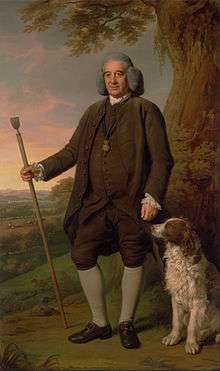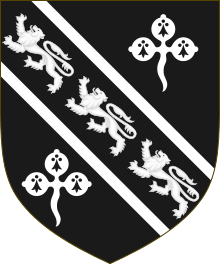Thomas Browne (officer of arms)
Thomas Browne (1708–1780), Garter Principal King of Arms, the second son of John Browne of Ashbourne, Derbyshire, became Bluemantle Pursuivant in 1737, Lancaster Herald in 1743, Norroy and Ulster King of Arms in 1761, and Garter in 1774 until his death.
Thomas Browne | |
|---|---|
 Thomas 'Sense' Browne by Nathaniel Dance-Holland, 1775 | |
| Born | 19 November 1708[1] |
| Died | 1780 Great James Street, London |
| Occupation | Officer of arms |
| Parent(s) | John Browne |
Biography
Browne was the most eminent land surveyor in the kingdom, and was called Sense Browne, to distinguish him from his contemporary, Lancelot Brown, who was usually called Capability Brown.[1] At first he resided at his seat of Little Wimley near Stevenage, Hertfordshire, which "he received with his wife." He later moved to Camville Place, Essendon. Browne died at his town house in St. James's Street (now called Great James Street), Bedford Row, on 22 February 1780. His portrait was engraved by W. Dickinson, from a painting by Nathaniel Dance-Holland.[1]
Arms
 |
|
References
- . Dictionary of National Biography. London: Smith, Elder & Co. 1885–1900.
- Godfrey, Walter H; Wagner, Anthony (1963). "'Garter King of Arms', in Survey of London Monograph 16, College of Arms, Queen Victoria Street (London, 1963), pp. 38-74". british-history.ac.uk. Retrieved 1 November 2018.